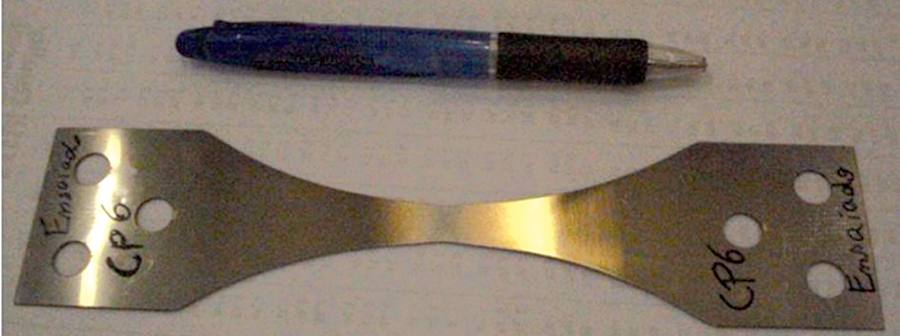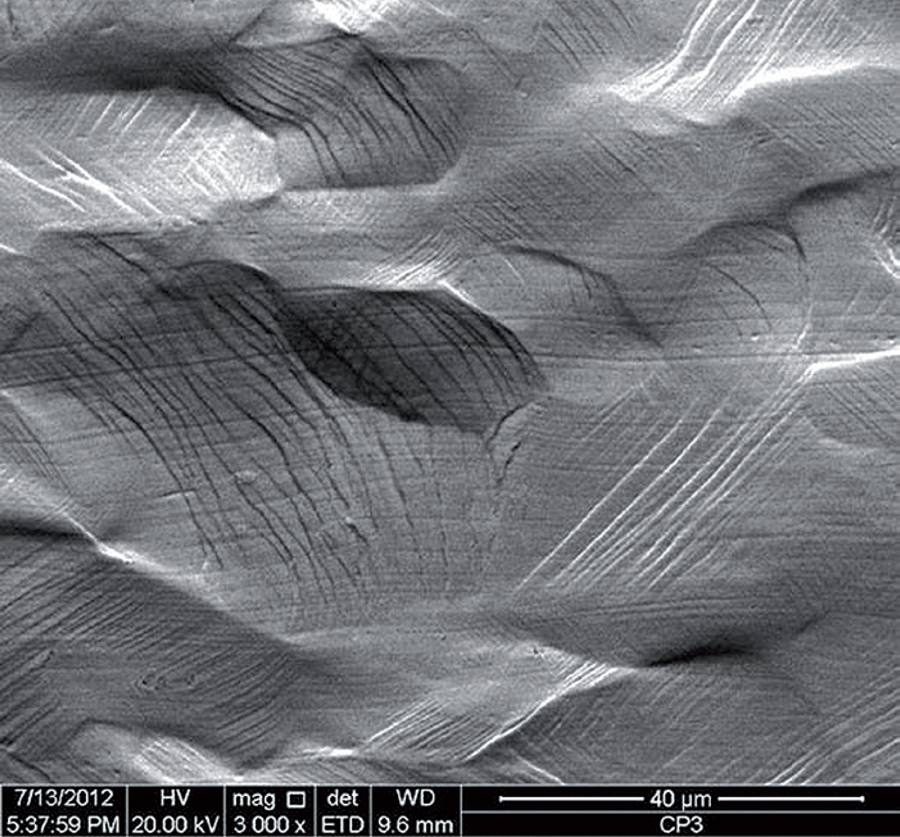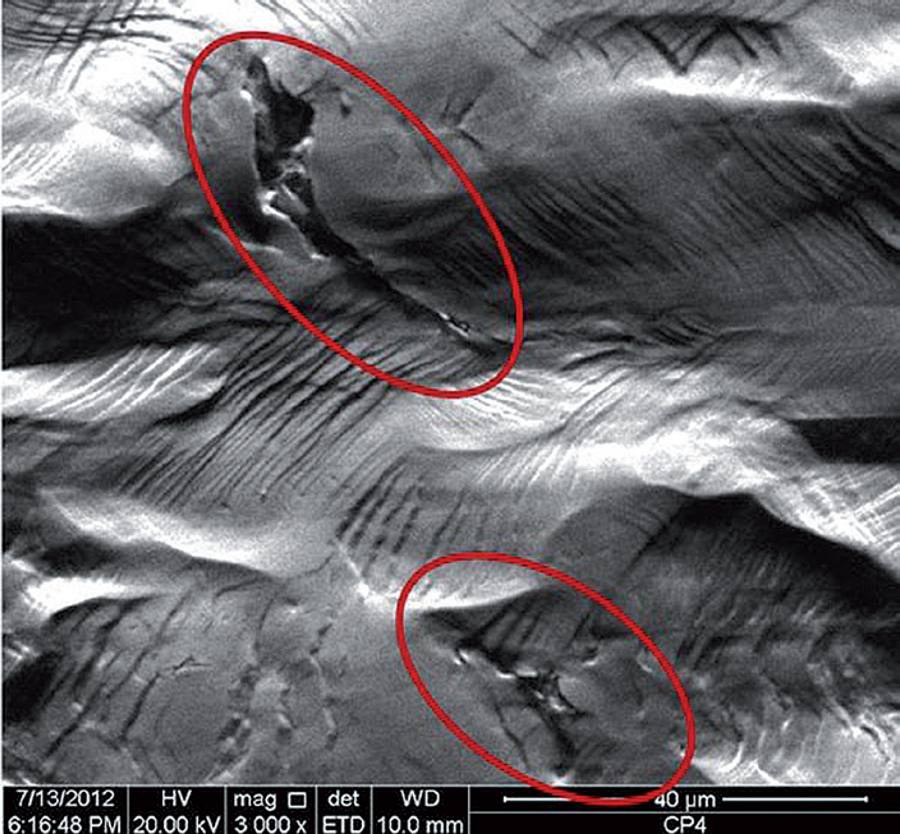Abstract
This paper presents a study about the fracture mechanism of a ferritic stainless steel (UNS S44400 type) during a tensile test. The applied materials for the experimental procedures were 25 specimens of the steel, machined in the rolling direction. Each specimen was submitted to standard polishing procedures. One of the samples, in the original state, was structurally characterized by reflected light optical microscopy. The other samples were submitted to tensile tests with a constant displacement rate. Three samples were tested until failure (complete tests) and the others just until specific strain values, when the tests were interrupted and the samples were characterized by using optical and scanning electron microscopy. The main objective of these characterizations was to evaluate the structural damage evolution and to identify the fracture mechanism for the tested conditions. A methodology to quantify the damage evolution by surface roughness, identified by optical microscopy, was proposed. A new index - Damage by Diffuse Reflection Index (DRI) - was proposed to quantify the damage evolution in function of the specimen deformation. It was possible to confirm the ductile behavior of the studied steel and that the main fracture mechanism was the traditional dimpled rupture.
Keywords:
tensile test; failure mechanism; ductile fracture; damage evolution



















